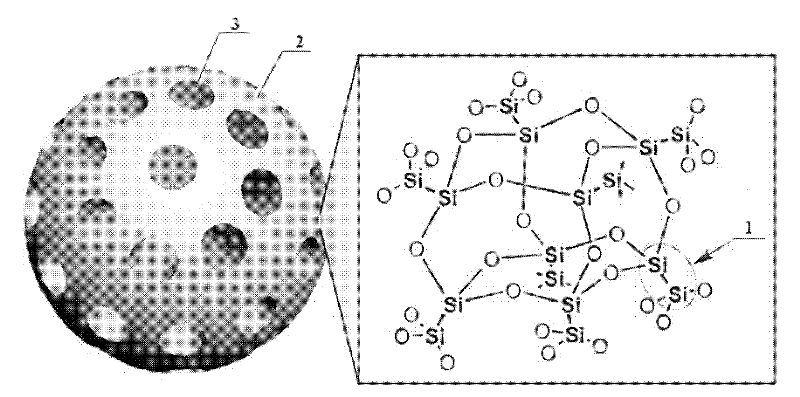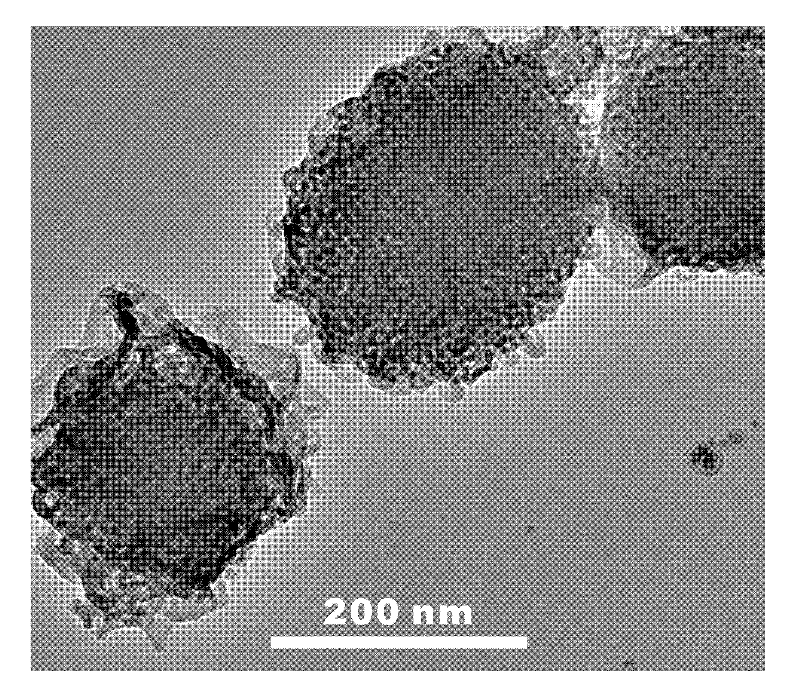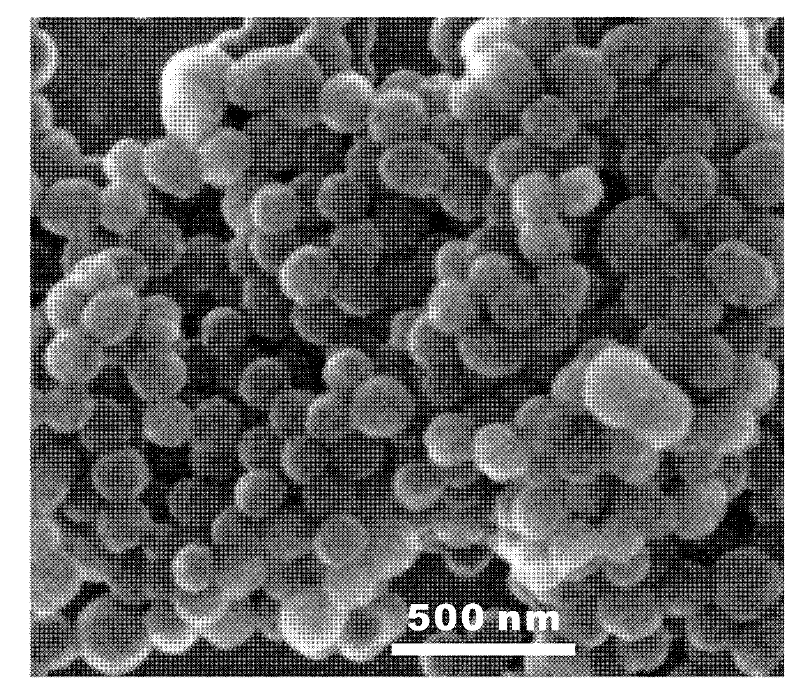A fluorescent mesoporous silicon oxide nanomaterial and its preparation method and application
A technology of mesoporous silicon oxide and nanomaterials, applied in the field of mesoporous nanomaterials, can solve the problems of difficulty in controlling the shape and size of porous silicon nanostructures, easy detachment of organic fluorescent dye molecules, affecting production and application, etc., and achieve a uniform spherical shape The effect of morphology and nanometer size, simple preparation process, and good biological safety
- Summary
- Abstract
- Description
- Claims
- Application Information
AI Technical Summary
Problems solved by technology
Method used
Image
Examples
Embodiment 1
[0037]Under the protection of argon, add 0.17mmol P123 and 50mmol sodium chloride together into 80mL aqueous hydrochloric acid (2mol / L), stir at 25°C to dissolve completely; add 10mmol triethoxysilane, continue stirring for 1 hour Centrifuge, ultrasonically wash three times with ethanol, and then disperse in water and freeze-dry. The obtained freeze-dried powder sample is labeled as "SIC-1". The SIC-1 freeze-dried powder was divided into four parts and placed in a nitrogen atmosphere furnace, and calcined at 500°C, 600°C, 700°C and 900°C for 2 hours respectively, and the four samples prepared were respectively marked as "SIC-500", "SIC-600", "SIC-700", and "SIC-900".
[0038] figure 2 It is the transmission electron micrograph of the "SIC-600" sample prepared in this embodiment, image 3 It is a scanning electron micrograph of the "SIC-600" sample prepared in this example. Depend on figure 2 and image 3 It can be seen that the silicon oxide material prepared by the met...
Embodiment 2
[0041] Take 20 mg of the "SIC-600" sample prepared in Example 1, dry it under vacuum at 120° C. for 12 hours, and then cool it to room temperature under vacuum.
[0042] Add 5 mL of 10 mg / mL doxorubicin ethanol solution, immerse at room temperature for 1 hour, centrifuge, and vacuum dry to prepare a fluorescent nanomaterial loaded with doxorubicin, which is labeled "DOXSIC-600".
[0043] The above-mentioned DOXSIC-600 nanomaterials were co-cultured with MCF-7 breast cancer cells, then the cells were washed with phosphate saline, and finally the cells were observed and photographed under a fluorescent confocal microscope. The photographic results show that the nanomaterials can be taken up by MCF-7 breast cancer cells in large quantities, and release doxorubicin in the cells, and can be fluorescently imaged (such as Figure 7 shown).
[0044] Use the CCK-8 kit (commercially available) to detect the viability of cells after cultivating for three days, and the results show that ...
PUM
 Login to View More
Login to View More Abstract
Description
Claims
Application Information
 Login to View More
Login to View More - R&D
- Intellectual Property
- Life Sciences
- Materials
- Tech Scout
- Unparalleled Data Quality
- Higher Quality Content
- 60% Fewer Hallucinations
Browse by: Latest US Patents, China's latest patents, Technical Efficacy Thesaurus, Application Domain, Technology Topic, Popular Technical Reports.
© 2025 PatSnap. All rights reserved.Legal|Privacy policy|Modern Slavery Act Transparency Statement|Sitemap|About US| Contact US: help@patsnap.com



